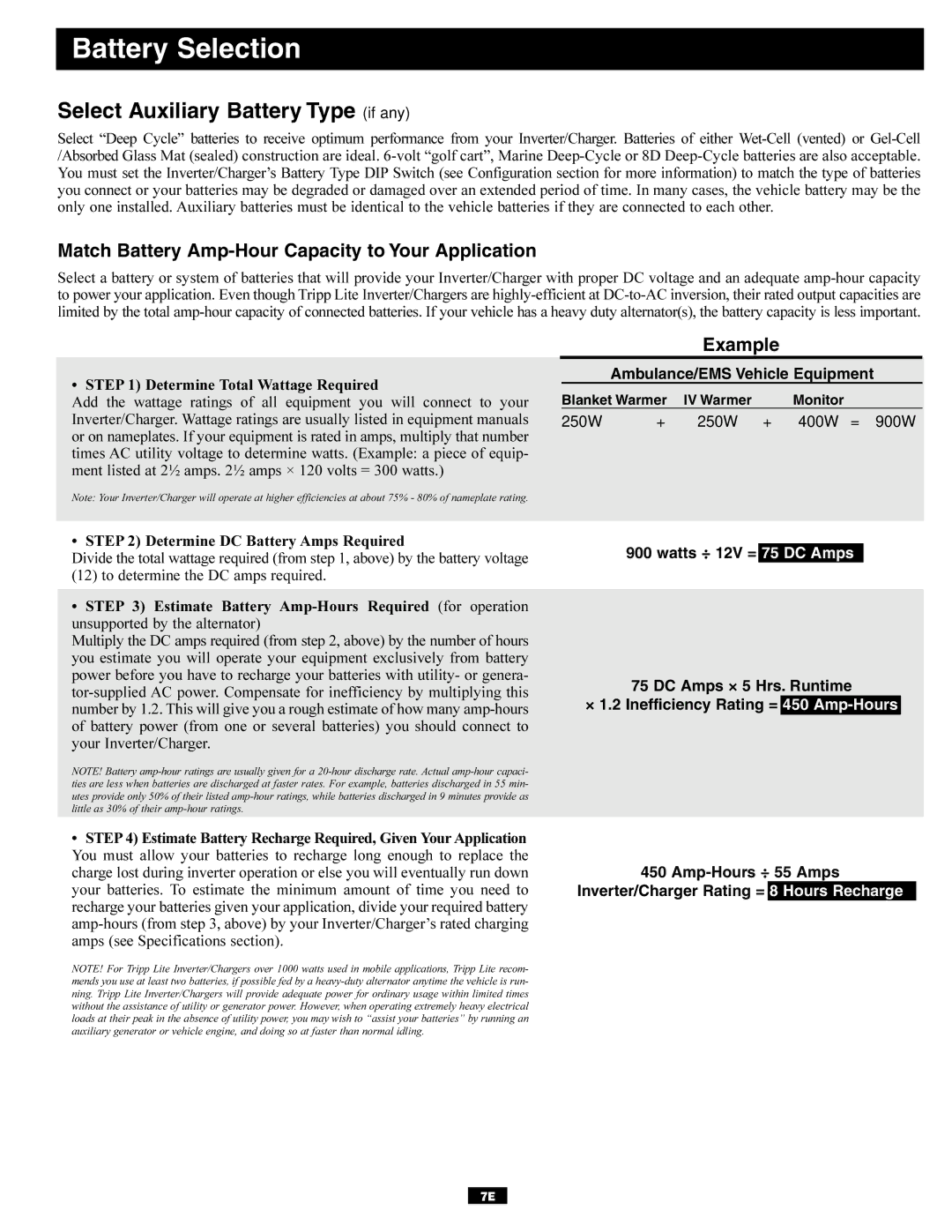
Battery Selection
Select Auxiliary Battery Type (if any)
Select “Deep Cycle” batteries to receive optimum performance from your Inverter/Charger. Batteries of either
Match Battery Amp-Hour Capacity to Your Application
Select a battery or system of batteries that will provide your Inverter/Charger with proper DC voltage and an adequate
• STEP 1) Determine Total Wattage Required
Add the wattage ratings of all equipment you will connect to your Inverter/Charger. Wattage ratings are usually listed in equipment manuals or on nameplates. If your equipment is rated in amps, multiply that number times AC utility voltage to determine watts. (Example: a piece of equip- ment listed at 2½ amps. 2½ amps × 120 volts = 300 watts.)
Note: Your Inverter/Charger will operate at higher efficiencies at about 75% - 80% of nameplate rating.
• STEP 2) Determine DC Battery Amps Required
Divide the total wattage required (from step 1, above) by the battery voltage (12) to determine the DC amps required.
•STEP 3) Estimate Battery
Multiply the DC amps required (from step 2, above) by the number of hours you estimate you will operate your equipment exclusively from battery power before you have to recharge your batteries with utility- or genera-
NOTE! Battery
Example
Ambulance/EMS Vehicle Equipment
Blanket Warmer IV Warmer | Monitor |
250W + 250W + 400W = 900W
900 watts ÷ 12V = 75 DC Amps
75 DC Amps × 5 Hrs. Runtime
× 1.2 Inefficiency Rating = 450
•STEP 4) Estimate Battery Recharge Required, Given YourApplication You must allow your batteries to recharge long enough to replace the charge lost during inverter operation or else you will eventually run down your batteries. To estimate the minimum amount of time you need to recharge your batteries given your application, divide your required battery
NOTE! For Tripp Lite Inverter/Chargers over 1000 watts used in mobile applications, Tripp Lite recom- mends you use at least two batteries, if possible fed by a
450
Inverter/Charger Rating = 8 Hours Recharge
7E
